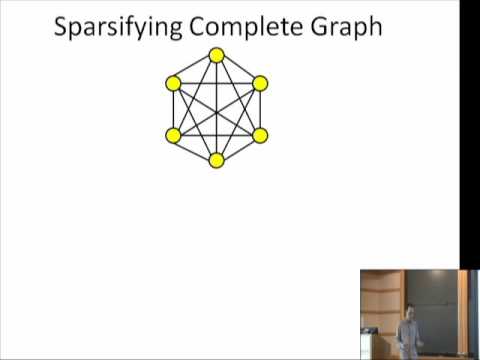Graph Sparsification by Edge-Connectivity and Random Spanning Trees
Presenter
April 11, 2011
Keywords:
- Computer Science and Discrete Mathematics (CSDM)
Abstract
A "sparsifier" of a graph is a weighted subgraph for which every cut has approximately the same value as the original graph, up to a factor of (1 +/- eps). Sparsifiers were first studied by Benczur and Karger (1996). They have wide-ranging applications, including fast network flow algorithms, fast linear system solvers, etc. Batson, Spielman and Srivastava (2009) showed that sparsifiers with O(n/eps^2) edges exist, and they can be computed in time poly(n,eps). We describe two new approaches to constructing sparsifiers. The first approach independently samples each edge uv with probability inversely proportional to the edge-connectivity between u and v. The fact that this approach produces a sparsifier resolves an open question of Benczur and Karger. The second approach samples uniformly random spanning trees. Both of our approaches produce sparsifiers with O(n log^2(n) / eps^2) edges. Our proofs are based on extensions of the Karger-Stein contraction algorithm which allow it to compute minimum "Steiner" cuts.
